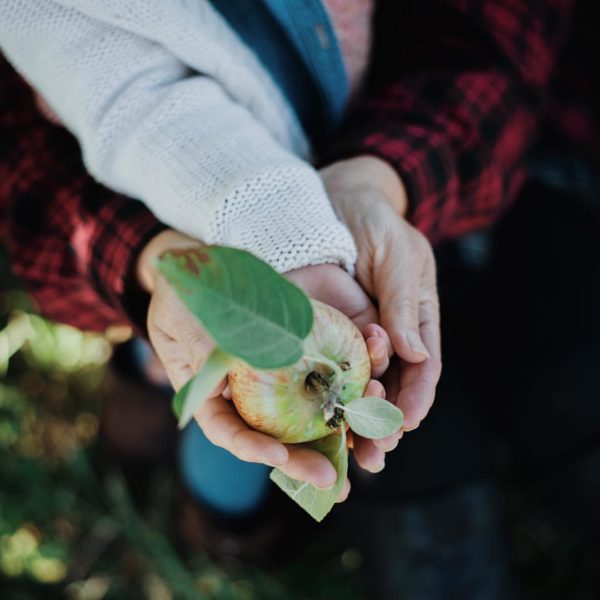
I hear about them on a daily basis. Bladders that leak, burn, spasm, and overall misbehave. Symptoms can range in severity from simply annoying to completely devastating. As a urology nurse practitioner I hear it all, and I empathize with women who experience urinary issues… and that number of women is higher than you might think! They are frustrating, and sometimes challenging, issues to treat as each individual will respond to the available treatment options differently. Below is a compilation of some of the most common bladder issues that women experience throughout the lifespan and some conservative treatment modalities that can help with each issue.
Urinary Urgency, Frequency, and Urge Incontinence
Urgency is the strong sudden urge to urinate and incontinence is when the bladder contracts with such force it results in the involuntary loss of a large volume of urine. Frequency is when you feel the urge to void really often throughout out the day. This happens typically later in life for women (and it can happen to men too!) Causes include having a history of diabetes, and a history of pelvic or lumbar surgeries. Oftentimes an exact cause can’t be identified. There are medications to treat these issue and they can be very helpful, however there are some simple things women can try first to see if it will minimize the symptoms or prevent these issues altogether.
- Practice timed voiding: Rather than waiting to feel the urge to void, just plan to empty your bladder every 2-3 hours during waking hours. This prevents the bladder from getting too full and causing an emergency bladder situation.
- Practice double voiding: After the first morning urination and last night time urination, wash your hands and then sit down to pee again. This gives the bladder another chance to contract to ensure that it is completely empty.
- Avoid common bladder irritants: There are foods and beverages that irritate the lining of bladder and exacerbate urgency and frequency.
- Concentrated urine: Not drinking enough water makes urine concentrated, which irritates the lining of the bladder. The color of urine should be light yellow to clear. Most people should drink about 2-2.5L of water per day or about 65-80oz. (This amount isn’t appropriate for everyone so check with your health care provider if you’re not sure).
- Constipation: Distended bowel rubs against the bladder causing it to feel irritated and make the bladder want to contract.
- Caffeine: Coffee and tea, even decaf, can be highly irritating to the bladder due to the acid content. It also acts like a diuretic and makes the bladder fill more quickly which can lead to more urgency and frequency.
- Carbonation: Pop and even carbonated water can also irritate the bladder. It’s not entirely clear why carbonated beverages are so irritating to the bladder.
- Citrus fruits: Certain acidic fruits such as oranges, grapefruit, lemons and lime and fruit juices can irritate the lining of the bladder.

I recommend that patients eliminate all bladder irritants for a few weeks, determine if their bladder symptoms have improved, and if they have, then slowly reintroduce the irritants one at a time to determine which ones impact their bladder as it is different for everyone. Sometimes simply reducing intake of a particular irritant can improve symptoms.
Stress Urinary Incontinence
Someone has SUI when they leak small volumes of urine with activities such as coughing, sneezing, doing jumping jacks, jumping on a trampoline, etc. This most often occurs after pregnancy and is a result of weakened pelvic floor muscles and/or weakened sphincter tone at the neck of the bladder. There are surgical options available for treatment of this issue, however it is reasonable to try more conservative treatment measures first.
- Perform Kegel exercises: This involves contacting and relaxing the muscles that support the bladder. To figure out which muscles to target, stop urinating midstream. Aim to contract these muscles for 10 seconds and then relax for 10 seconds, do this 10 times three times daily. If the SUI is moderate to severe, the help these provide may be minimal.
- Avoid bladder irritants.
- Maintain a healthy weight for your height: Having a high BMI puts more pressure on the bladder and can make leaking issues worse.
- Try pelvic floor PT. There are specially trained physical therapists who can help you improve the strength of your pelvic floor muscles using techniques such as biofeedback (this helps to increase awareness of your pelvic floor muscles and helps you identify which muscles to contract to avoid leaking urine). There are a few different PTs in Duluth who offer this service.
Urinary Tract Infection
Unfortunately, due to anatomic differences between men and women, women are more prone to urinary tract infections. This happens when bacteria gets into the bladder, sets up camp and is able to multiply and grow. Women may feel symptoms of burning with urination, frequency of urination, bladder/urethral pain, and may see blood in the urine. We are able to diagnose UTIs with a urine sample. What a lot of people don’t know is that there are two parts to the test for UTI. First there is the urinalysis, which just gives a snapshot of what’s going on in the urine right at that minute. It can indicate if the urine appears infectious but cannot actually diagnose a UTI. You need the second part of the test for that, the urine culture. This take 48-72 hours to come back from the lab and it tells us exactly what bacteria, if any, is growing in the urine and determines which antibiotic will treat the infection if one is present.
What to do if you believe you have a UTI:
- Increase water intake to 2-3L of water per day. This is the number one way to prevent UTI and to treat UTI (not always, but sometimes people can treat them on their own and do not require antibiotics).
- There are over the counter products such as cranberry tablets and vitamin C tablets that you can try. The goal with these products is to increase the acidity of the urine as bacteria do not acidic environments. These products are not scientifically proven to work, however anecdotally women often tell me they help with their symptoms or help prevent UTIs for them.
- There are over the counter tablets that attempt to alleviate bladder pain caused by UTI. These products are not tested or approved by the FDA so if you try them please follow the manufacturer instructions on the box.
- Avoid bladder irritants as they may make symptoms worse.
- Wear cotton underpants to prevent trapping moisture near the vaginal and urethral openings. Bacteria are fond of warm, moist environments.
- Avoid washing the vaginal area with soaps, just warm water will do. Soaps can be harsh of the sensitive skin in that area and can remove healthy bacteria, which keep the whole system in balance.
- If symptoms are not getting better with the above measures or if symptoms are severe you may need to have a urine test. This has to be ordered by a health care provider. Please ensure that they order the urinalysis and the culture, then follow up a few days later to determine what bacteria was causing the infection and that you have been prescribed the correct antibiotic for that bacteria. If symptoms are tolerable it is best to wait to start antibiotics until the culture comes back.
Pelvic Pain Syndrome/Pelvic Floor Dysfunction
Sometimes women have symptoms that seem identical to urinary tract infection with burning with urination, bladder pain, urethral pain, and urinary frequency, however no bacteria grows in the urine culture. This is a tricky situation that warrants further investigation. When this happens, and after all other possible diagnoses for these symptoms have been ruled out, we start to think about the possibility of a pelvic floor dysfunction or interstitial cystitis. These are complicated chronic pain conditions of the pelvic floor and bladder. They’re difficult issues to treat, as each individual will respond differently to the available treatments. There are a variety of treatment options available and they can usually work to at least bring the symptoms to a tolerable level. Unfortunately, women are often plagued by lifelong periodic “flares” where symptoms suddenly get worse without much rhyme or reason, they can take months to get the symptoms back into control again. This is one of the reasons that these issues are so difficult to treat.
The main tenets of treatment include:
- Eliminating bladder irritants.
- Pelvic floor physical therapy.
- Practicing timed voiding to attempt to retrain the bladder.
- Antihistamines can help alleviate symptoms of IC.
- Healthy sleep habits and stress management.
- NSAIDS such as aspirin/ibuprofen and Tylenol for pain flares.
- Bladder instillations. These are mixtures of medicines that go directly into the bladder to attempt to alleviate symptoms. These can only be prescribed by a health care provider.
- Medicines that relax the bladder muscles. These also can be prescribed by a HCP.
The above urinary issues are by no means an exhaustive list of all the things that can go wrong with womens’ bladders, and the treatment modalities suggested unfortunately won’t work for everybody. I encourage anyone who is struggling with urinary issues to first discuss them with your primary care provider. If you’ve done that and the treatments you’ve tried aren’t working, then please get yourself to a specialist to investigate things a little further and discuss all the available treatment options.










